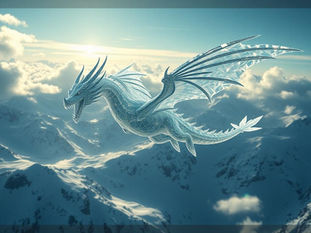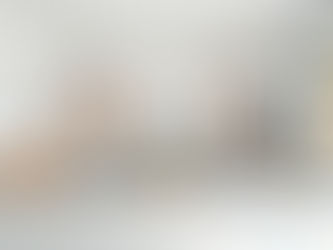
Explore Midjourney Editor: Simple Methods for Advanced Images
Jun 5
5 min read
0
19
0

The Midjourney Editor gives you new ways to change and improve your AI-generated art. It lets you make adjustments right inside or through an external tool, offering many possibilities. It is a powerful tool for refining your pictures.
Whether you want to fix small problems or make big changes, the editor provides features to help. You can easily remove things, add new objects, change styles, and more. Let's see how you can use the new Midjourney Editor to make your images even better.
Editing Objects in Your Images
The editor makes it easy to adjust things within your image.
Remove Objects: Select an object you don't want and tell the editor to remove it.
Add Objects: Select an area and describe what you want to add. The editor will add the item there.
Replace Objects: Select an object (but maybe leave its shadow). Then, prompt for a new object to take its place.
Redecorate Scenes: You can select different parts of a scene, like a room, and replace furniture or items piece by piece.
Sometimes you may need to try a few times with your text prompt to get the exact result you want when editing objects.
If you are making extensive adjustments or managing many variations, manual editing can take time. Consider trying the TitanXT Midjourney Automation Suite to quickly handle complex workflows and generate multiple edits efficiently.
Changing Backgrounds and Scenes
You are not stuck with the background Midjourney first creates.
Modify Backgrounds: Upload a photo, select a person, erase the background, and add a new scene using a simple prompt.
Extend Images: Use the move and resize option to change the aspect ratio or drag the image borders. Add a prompt, and the editor can seamlessly extend the background to fill the new space.
Changing Weather: Take an image, like a sunny meadow, and tell the editor to change the weather, perhaps to a storm. It will adjust the scene to match your description.
Transforming Images: From Sketch to Render, Photo to Art
The retexture function is a powerful way to change the look of an entire image.
Sketch to Render: Drag in a drawing or sketch. Use retexture and a prompt to turn it into a fully rendered image in a specific style (like cinematic Unreal Engine). This works with black and white drawings and even basic color 3D renders.
Photo to Art: Upload a photo and use a prompt with retexture to make it look like a sketch or convert it into a piece of artwork in a different style.
Change Styles Completely: Use retexture to reimagine a scene in different ways with just a text prompt.
Fixing Details and Imperfections
The editor can help you fix problem areas in your images.
Repair Faces: Highlight a face in an old image and use a prompt to improve it.
Fix Hands: Similarly, highlight a hand area and prompt to fix or change the hand. This often takes several attempts.
Remove Blemishes: Select areas with skin blemishes and prompt for clean, smooth skin. The AI can add realistic skin texture.
Working with Consistent Characters
Keeping character looks the same across multiple images is now possible.
Replace Characters: Download an image with a character. Go to the editor, remove the character part you want to change. Switch to Midjourney Version 6.1 (as character reference currently works best there). Use character reference with the downloaded character image. Add a character weight (like `--cw 100`). Prompt describing the scene. The editor will insert the consistent character.
Insert Characters into Photos: Mask out an empty area in a real photo and use the character reference process to add a consistent character into the real scene.
Multiple Characters: Repeat the process to add different consistent characters into the same scene or photo.
Managing multiple character references and prompts for consistent looks across many images can be time-consuming. Streamline this by checking out the TitanXT Midjourney Automation Suite.
Using Layers and AI Photobashing
The editor introduction of a layer system adds a new possibility.
Add Transparent Images: Drag and drop transparent PNG images into your scene. Resize and place them.
Reorder Layers: Move layers up or down to place objects in front of or behind others.
Blend Elements: Use the erase tool on layers to create space around objects and allow for blending, especially for shadows. You can erase parts of upper layers (like grass over wheels or feet near the ground) to help objects blend better.
Basic AI Photobashing: Combine different elements using layers and blending, then add a prompt describing the final scene. The editor can integrate them.
Changing Appearance Features
You can make specific changes to faces and clothing.
Add Hair: Select the area around and slightly into a bald head. Prompt for the desired hairstyle.
Change Expressions: Select around the mouth and cheeks and prompt for a different expression, like a smile.
Add Beards: Select areas around the mouth, chin, and cheeks to add a beard.
Remove Hair: Select all the hair on and around the head and prompt for a "bald person".
Change Clothing and Body Type: Select the clothing area and some space around it. Prompt to change both the clothing type and the character's build for a more specific look.
Edit Eyes and Lips: Select pupils to change eye color. Select lips to change lipstick color.
Advanced Editor Tricks
Beyond basic modifications, the editor offers some neat tricks.
Upscaling Small Images: Drag in a small image. Use the erase tool on a tiny portion. Add a prompt. Submit. Once the small edit is done, you can use the upscale to gallery option. Midjourney resizes your original low-resolution image to the size of an upscaled AI image, adding detail. This works well with faces and organic things.
Submerging Objects: Bring in buildings or objects. Remove space around and below for reflections. Remove parts of the object on a top layer. Prompt to submerge them into existing water, creating convincing reflections.
Remove Borders/Distractions: Select unwanted borders or elements and prompt for what you want there instead.
Repair AI Text: Select AI-generated text that looks wrong. Type the correct text in the prompt area (often better to put the whole text block). Submit. It can fix the text, although it might take attempts or require fixing letter by letter.
Create Video Start/End Frames: Generate an image in Midjourney. Use the editor to arrange elements for a start frame. Further alter it to create an end frame. You can then use these in AI video tools.
Many of these advanced techniques involve specific steps. Automating these creative workflows can greatly speed up your production time. Discover how at TitanXT Midjourney Automation Suite.
Using Personalization and Mood Boards
You can guide the editor's style based on your preferences.
Personalization: Turn on personalization and use your global profile. This applies the style of images you generally like to the edited result.
Mood Boards: Select specific mood boards you have saved (like gigaresque dystopia, black and white, cyberpunk, vaporwave, glitchesque, old film look). The editor will apply the style from that mood board to your image edit.
Cropping Images (Workaround Needed)
Direct cropping with the handles in the editor currently gives an error. You need a workaround:
[LI]Close the editor and download your image.[/LI]
[LI]Use an external image cropper tool (like Adobe's free online one).[/LI]
[LI]Crop the image using the external tool and download the cropped version.[/LI]
[LI]Go back to the Midjourney Editor and upload the cropped image.[/LI]
[LI]Perform the upscaling trick mentioned earlier: remove a tiny portion of the cropped image, add a prompt, submit, and then upscale to gallery.[/LI]
This lets you effectively crop and then upscale the specific area you want to focus on, getting more detail out of that section.
Conclusion
The Midjourney Editor is still improving, but it already offers many ways to refine and change your images directly. From simple object changes to complex style transformations and even prepping for AI video, the possibilities are vast. Experiment with the tools and see how they can elevate your Midjourney creations.
To handle repetitive tasks or generate many variations faster, check out the automation tools available. Explore the TitanXT Midjourney Automation Suite to streamline your Midjourney workflow.






